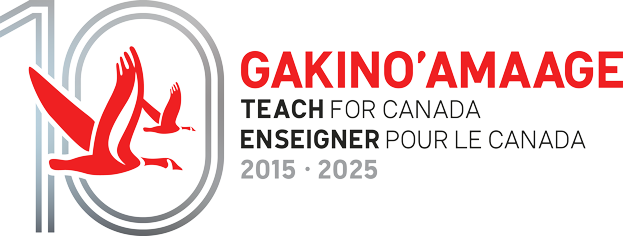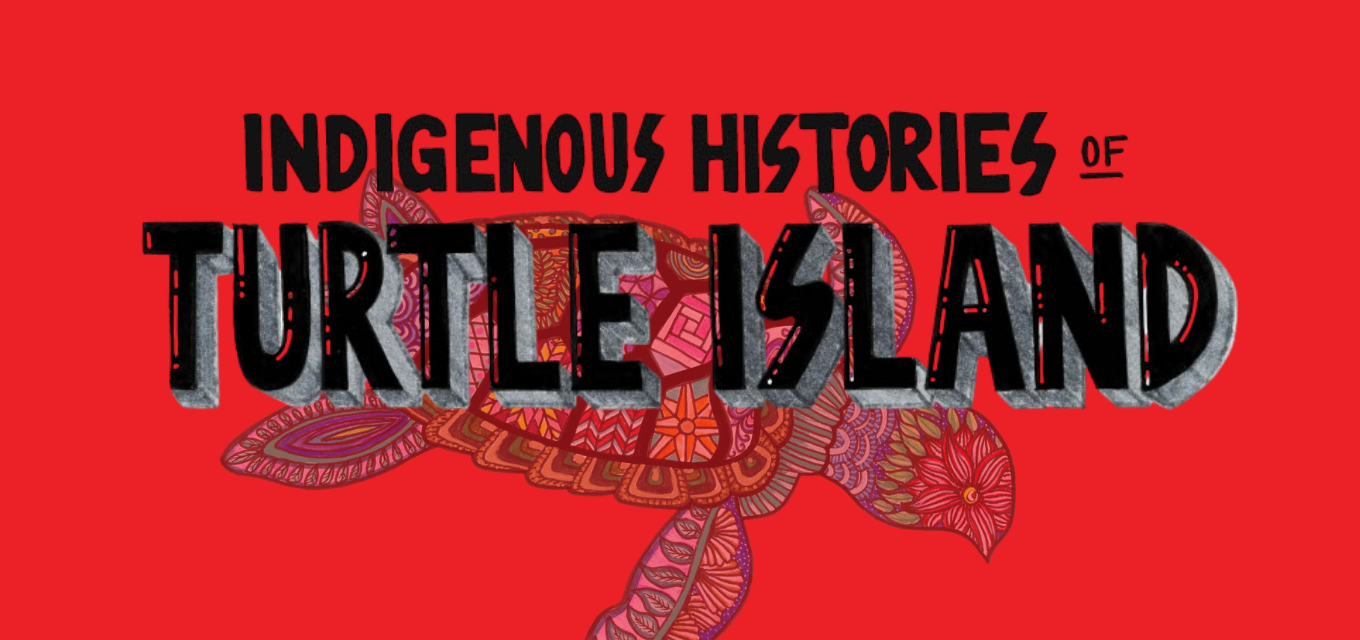As the 2025 Summer Enrichment Program kicked off in Thunder Bay this week, the newest Gakino’amaage Teacher Cohort gathered at Lakehead University for a session titled Indigenous Histories of Turtle Island. At the centre of the room stood Laura Maracle, a Haudenosaunee woman from Kenhtè:ke, Tyendinaga Mohawk Territory—and a long-time presenter in the Program.
Rather than using slides or lecture notes, Laura led the group through the Blanket Exercise: a powerful, interactive experience that explores the history of relationships between Indigenous and non-Indigenous peoples on the land now known as Canada.
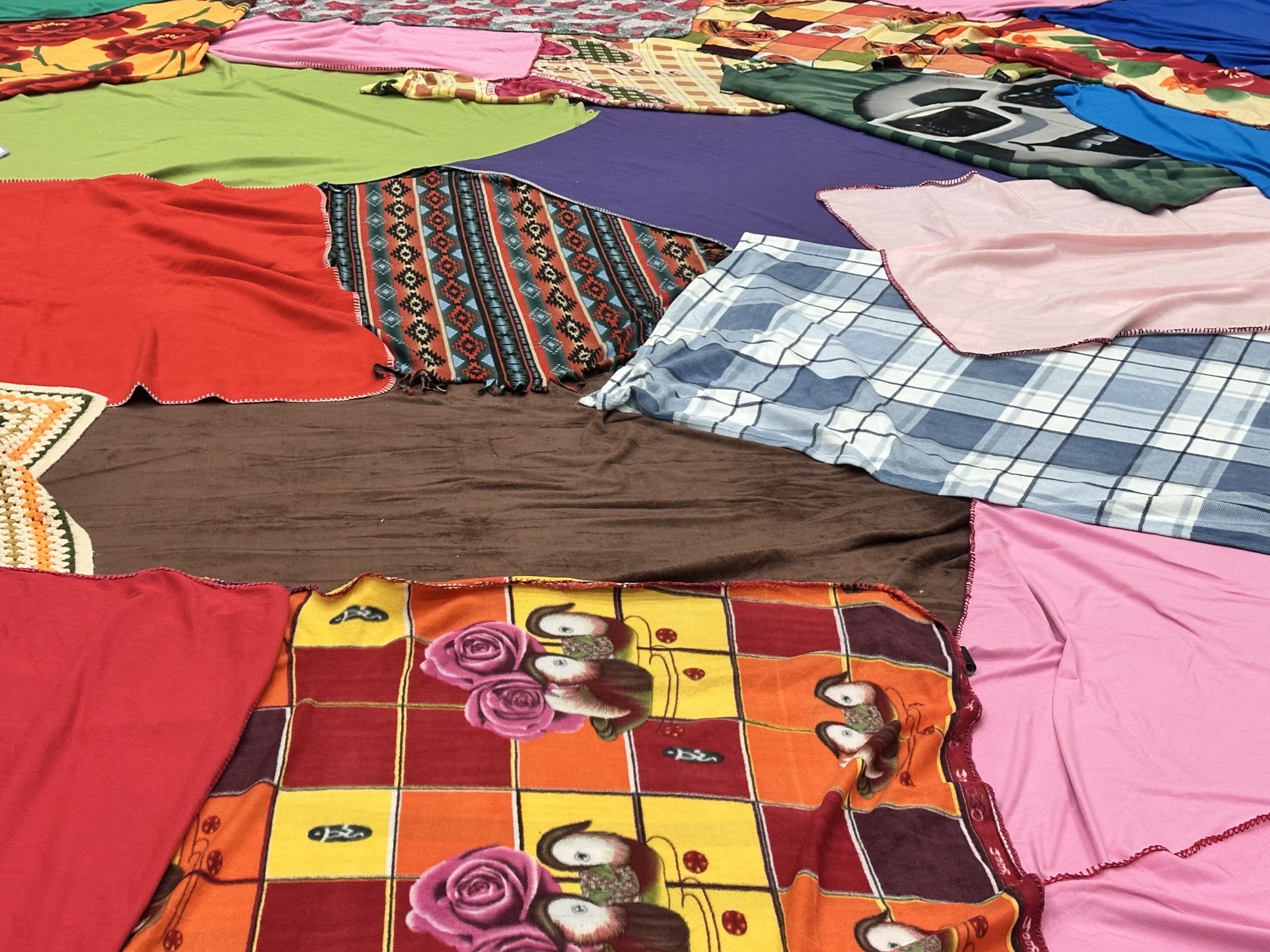
A tapestry of blankets used during the Blanket Exercise with Gakino’amaage’s 2025 Cohort.
“I like doing it this way because it reaches different learning styles,” Laura explained. “People go through the motions and feel it. When they feel it, they remember it.”
The Summer Enrichment Program is a cornerstone of Gakino’amaage’s community-focused approach to preparing teachers to live and work in northern and remote First Nations. The Program begins with 15 hours of online learning and continues with a week of in-person sessions facilitated by Indigenous leaders, northern teachers, and education experts. Guided by input from Gakino’amaage’s Advisory Council of First Nations Community Partners, it is grounded in three core pillars:
Culture – Learning about First Nations histories, cultures, languages, and current realities
Community – Building relationships with local leaders and understanding community values and governance
Classroom – Developing trauma-informed, culturally-responsive teaching strategies, along with personal and professional self-care practices
Laura’s session focused on the first two—Culture and Community—while also helping educators reflect on how history continues to shape the classroom. The experience prompted meaningful conversations about the legacies of Residential Schools, the Sixties Scoop, and what some now refer to as the Millennial Scoop: the continued overrepresentation of Indigenous children in Canada’s child welfare system today.
“We have more children in care now than we ever did in the Residential School system,” Laura shared. “If teachers don’t know these things, it’s hard to understand the full impact on the families and communities they’re going to work with.”
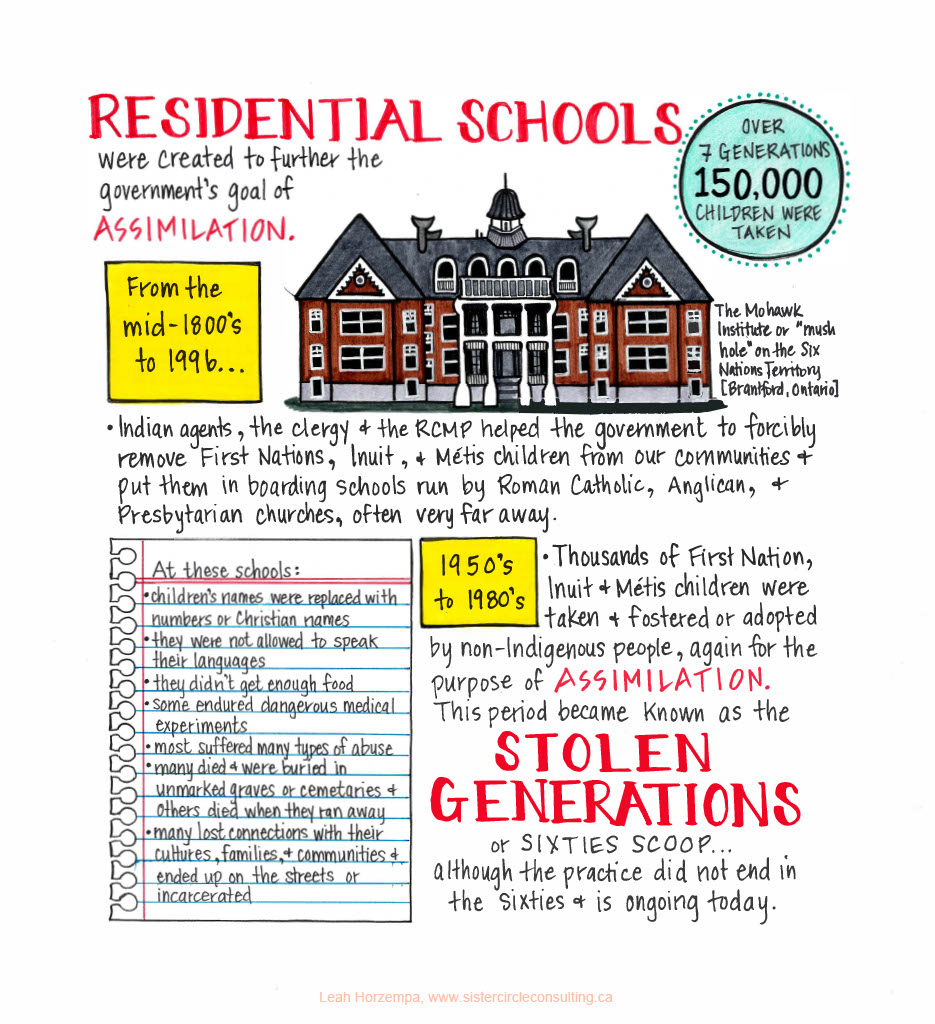
Gakino’amaage commissioned illustrative note taker, Leah Horzempa, to record Laura’s session in 2020.
A Decade of Learning and Commitment
This year marks the 10th anniversary of the Summer Enrichment Program. Since its launch in 2015, the Program has prepared nearly 300 educators—including many who have remained in community for multiple years. The 2025 Program reflects a deeper evolution: a land-based learning model shaped by community voices and rooted in First Nations resurgence.
“In community work, it’s rare to see this kind of long-term commitment,” Laura reflected. “But Gakino’amaage continues to show up—and the First Nations they partner with continue to trust them. That speaks volumes.”
For Laura, the impact is clear. “I know the organization is doing the work because I see it in the actions they take. I see it in how they invest in these teachers. And I see it in how the teachers are already talking about incorporating land-based learning, listening, and showing up in community in a good way.”
She shared how meaningful it felt to be part of this moment:
“I’m honoured to be here again—to spend time with this group, to kick off my summer and birthday week, and to contribute to a Program that’s been going strong for ten years and still growing.”
A Two-Way Relationship
The Gakino’amaage Teacher Cohort comes from many backgrounds and teaching journeys, but Laura said she could sense a shared openness during the session.
“Their responses felt genuine,” she said. “They were listening and asking thoughtful questions, and that made my heart happier.”
That human connection is what keeps Laura returning to the Program each year. “I have apprehensions when people go into Indigenous communities with preconceived notions,” she said. “But with Gakino’amaage, it’s different. There’s a relationship of mutual commitment. They’ve made space for Indigenous voices. That’s why I continue to show up.”
Laura sees her role not just as an educator, but as someone modelling how to build real, respectful relationships—something that starts in the classroom but extends into everyday interactions in community.
“My favourite part of working with the cohort is sitting down and getting to know these teachers as people. Hearing their stories, sharing mine—it’s how we begin to build trust.”
Preparing Teachers for What’s Ahead
The goal of the Summer Enrichment Program is not to provide all the answers, but to prepare teachers to enter First Nations with the humility, context, and tools to build relationships and learn in partnership with their students, families, and colleagues.
“It’s about helping people understand where we are today and why,” Laura said. “So they can move forward with awareness and care in how they think, act, teach, and relate to others.”
That approach reflects the aspiration behind the Summer Enrichment Program: that teachers will not only bring strong classroom skills, but also a deep respect for the land, people, and knowledge systems they’re joining. The Program helps lay that foundation—and for many, it becomes a meaningful step in their teaching journey.
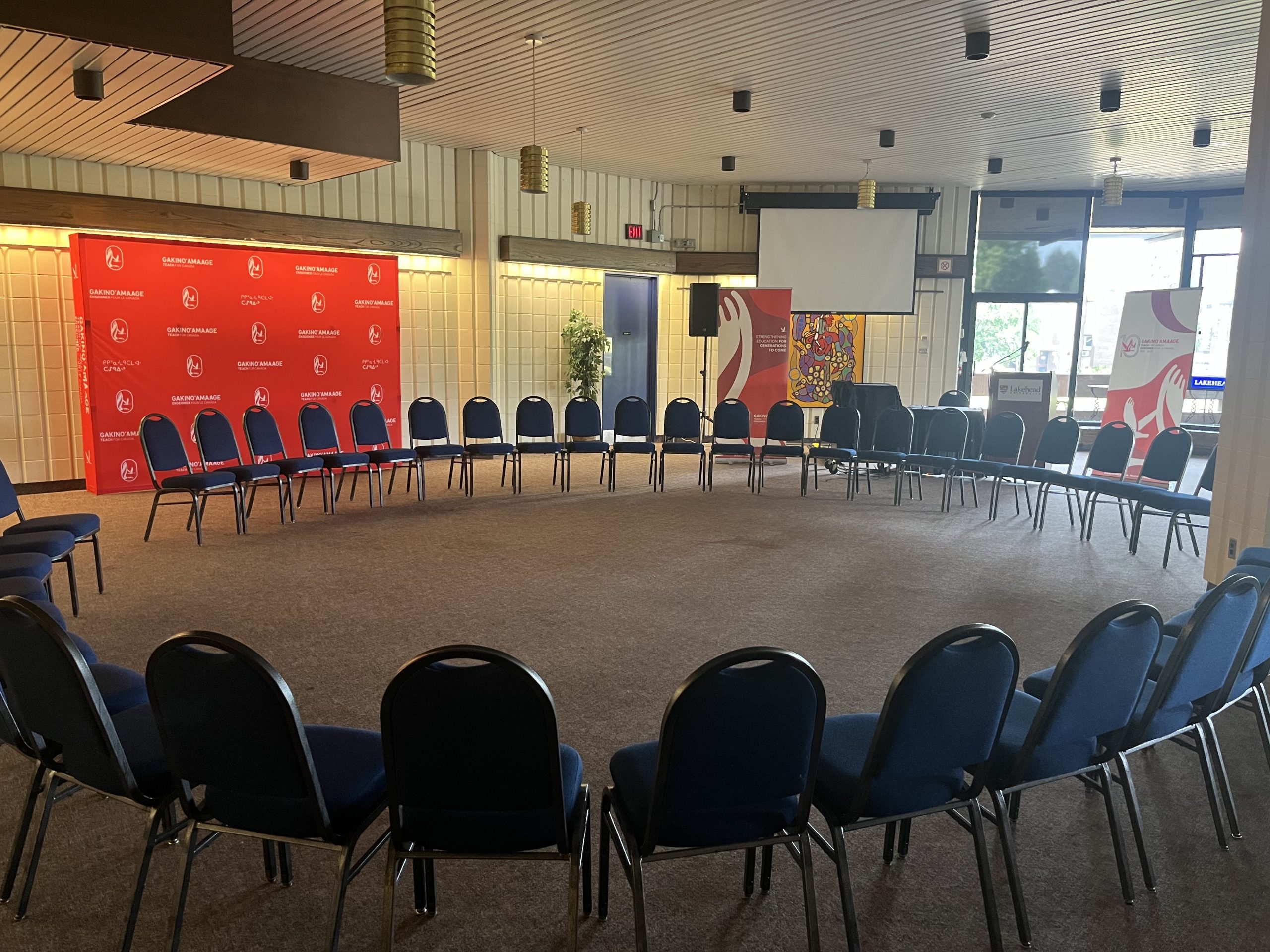
Lakehead University is the home of Gakino’amaage’s Summer Enrichment Program.
Learn more about the Summer Enrichment Program and how it supports educators in preparing for life and work in a northern First Nation.
Interested in going north to teach? Explore how Gakino’amaage supports you every step of the way.


